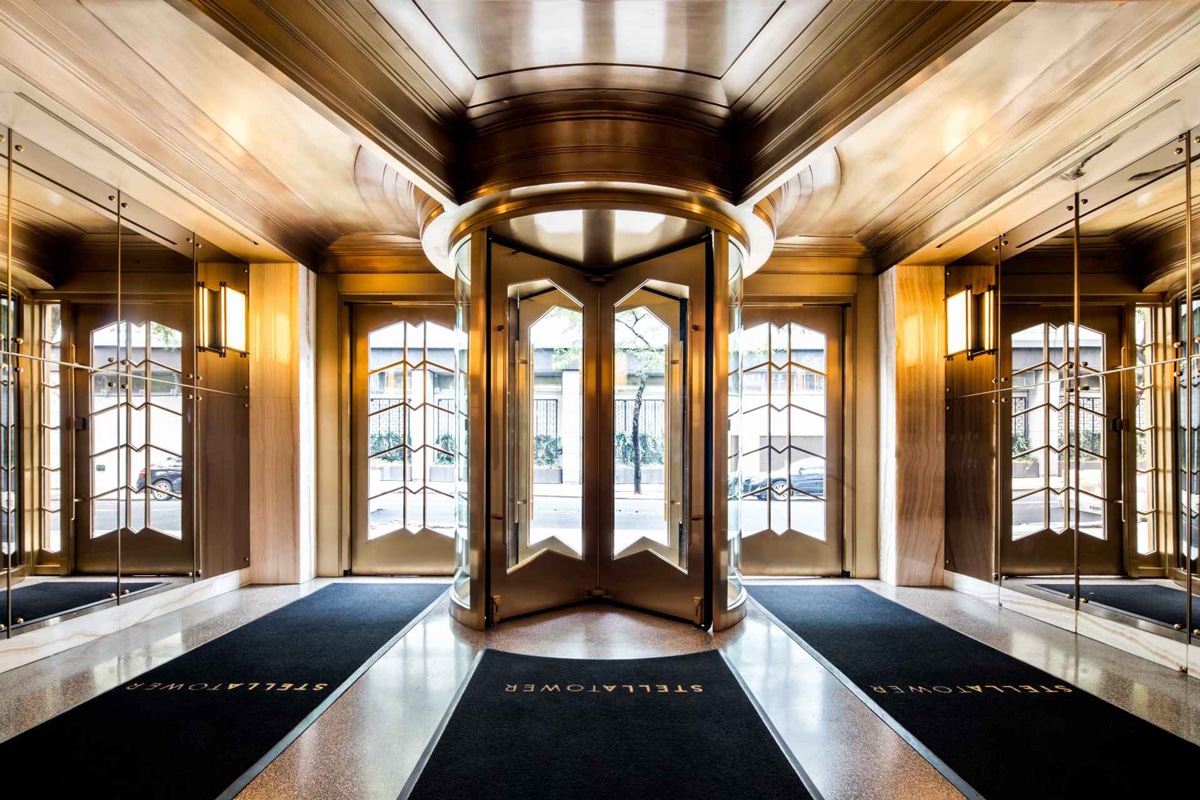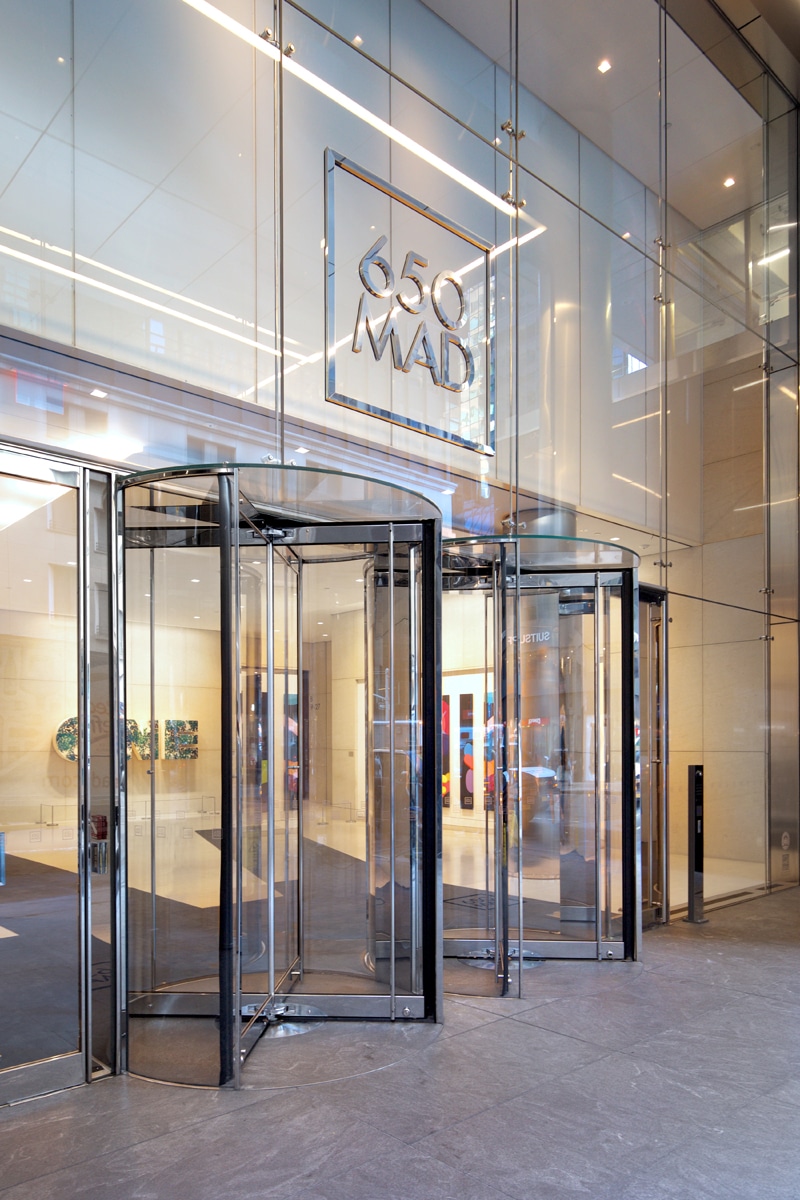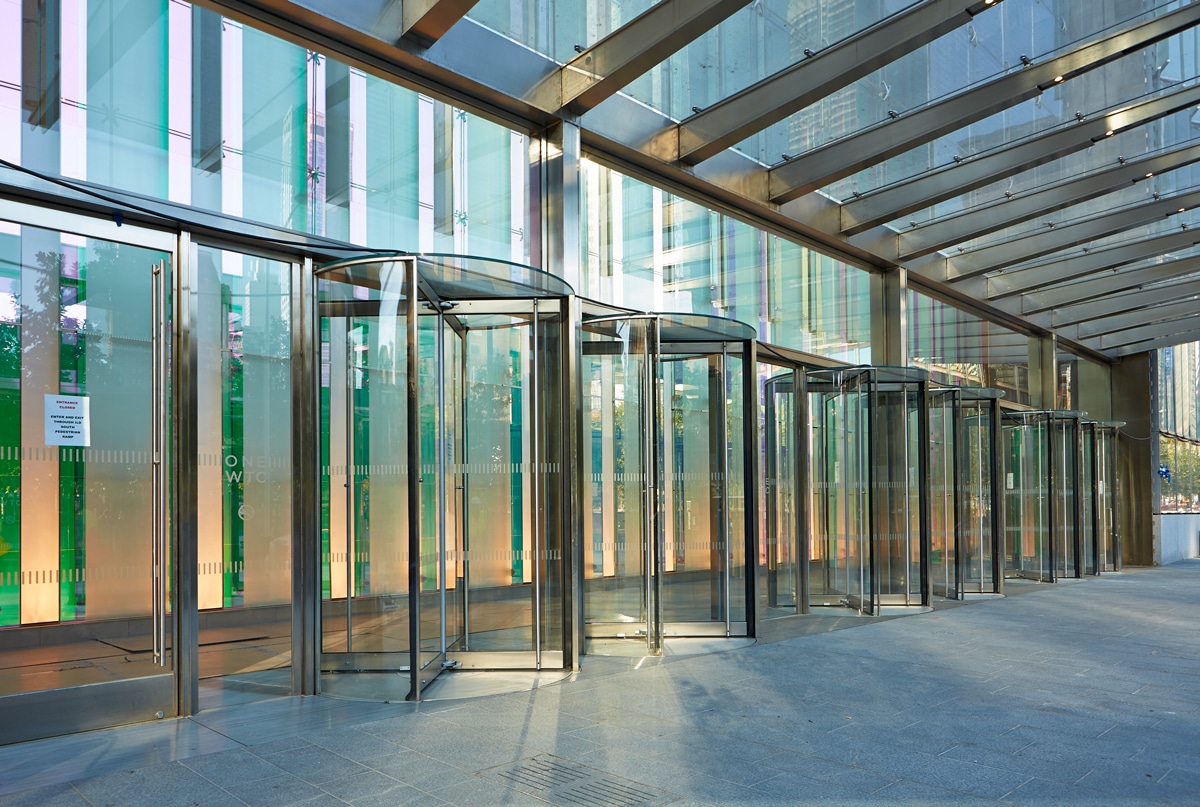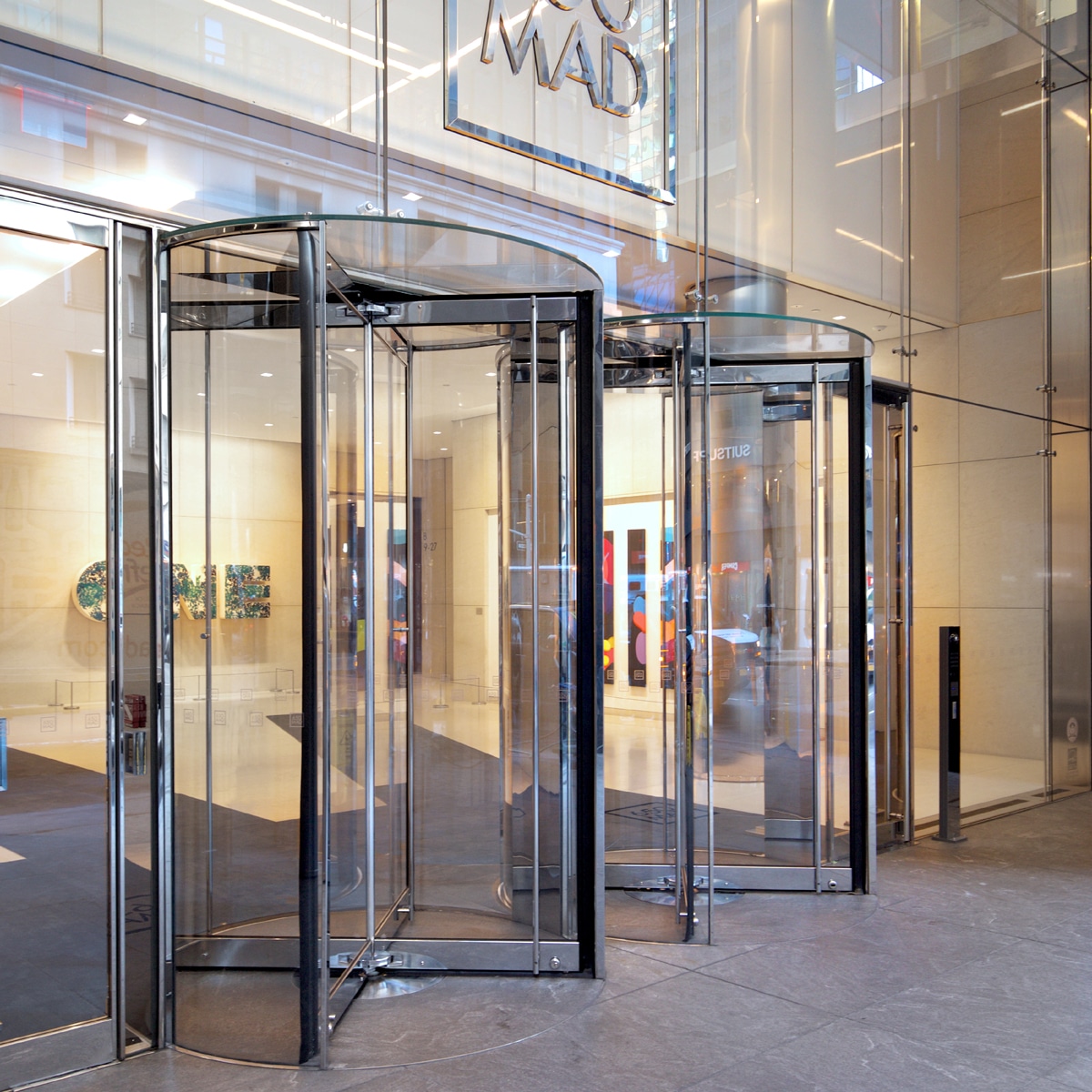
[Photo: Courtesy of dormakaba]
dormakaba on how revolving doors save energy and enhance the experience of entering and exiting a building.
Since the first door was installed in 1945, Crane has been the industry standard for revolving doors. More than 70 years later, you’d be hard-pressed to pass through a manual revolving door in New York or Chicago that wasn’t manufactured by Crane, now a brand owned by dormakaba. “We are the largest producer of manual revolving doors in the United States,” says Ron Wartman, plant manager for dormakaba’s Crane facility.
Longevity gives the company an edge. “Being in business so long, we have become the go-to provider for architects and end users,” says Angus MacMillan, national sales manager for Crane. “They appreciate the quality of our doors and our ability to customize doors to meet each project requirement.”
Consider the following benefits of revolving doors.
1. Hand-crafted and Customizable
dormakaba manufactures its doors at a factory in a Chicago suburb, where the metal is fabricated onsite. “I like to say we’re a custom metal shop that happens to specialize in revolving doors,” MacMillan says.
In other words, it’s no cookie-cutter process. Each door is created according to a custom engineering plan. That level of detail means each door that leaves the plant is carefully crafted to meet the project’s specific requirements. While many revolving door manufacturers use aluminum extrusions and clad pre-finished material to the sub-frame, limiting their product offering to architects and end users, Crane offers a fully formed and welded product that is also hand-polished by experienced craftspeople. This type of construction allows Crane to fabricate the strongest revolving door possible—and one that conforms to specific project design and dimensional requirements.
FROM OUR JAN+FEB 2019 ISSUE
The preferred publication of leading green professionals.

[Photo: Courtesy of dormakaba]
2. Energy-Conserving
A revolving door is essentially a rotating vestibule that is always open for pedestrians and closed to the outside elements. Studies by MIT and ASHRAE demonstrate that a revolving door may be as much as eight times more energy-efficient than the best slide or swing door. “In terms of energy savings, the difference is huge,” Wartman says. And dormakaba adds an extra layer of protection with its factory-made weather sweep, ensuring virtually no air escapes between the inside and outside environments.
A quick look at the basics of the “stack effect” helps us understand the benefits of the right revolving door detail. Generally, we know air flows in and out of a building due to differences in humidity and air pressure. When it’s cold outside, heated air rises toward the top of the building, and if there are openings lower in the building, cold air rushes in to replace the heated air. Air drafts work against our best insulation methods and can waste significant amounts of energy expended by HVAC systems as they work harder to control temperature. In the U.S., buildings account for 41% of overall energy use, 73% of electricity use, and 38% of all CO2 emissions, according to the USGBC. Fortunately, something as simple as the right revolving door can impact a building’s energy use.
Crane doors meet rigid standards set by ASTM (American Society for Testing and Materials) for air infiltration (ASTM E283). In addition to monitoring air infiltration in a lab setting, Crane has also performed field air infiltration testing (ASTM E783) to provide an additional level of confidence to the architect and end user. The doors are also tested in an actual building, providing an additional level of confidence to customers.
3. Space-Saving
According to Wartman, in a typical vestibule application, revolving doors require less square footage on the interior of a building than swing and sliding doors. That means a restaurant can put more tables in that space or a storefront can have additional displays—allowing businesses to be more profitable.

[Photo: Courtesy of dormakaba]
4. Ready for Winter Weather
In addition to the air-blocking properties of its doors, dormakaba has more solutions to accommodate winter weather. The company offers a stainless steel floor grill that fits underneath the door to collect any snow and slush people may track in. This serves both aesthetic and safety purposes. The floor grills Crane manufactures also collect dust and debris when a pedestrian enters the building, which can be counted toward LEED credits.
5. Low Maintenance
A Crane door lasts decades, provided owners follow basic maintenance routines. End users should replace the weather sweep—the rubber-and-felt piece that creates a seal between the door and the floor to prevent air from escaping—every 12 to 24 months, depending on usage. The company also sells rehab kits that make an older door like new again.
6. Durable
Crane doors are made of aluminum, stainless steel, bronze, and wood and last for decades. Crane builds the only fully formed and welded door on the market. The metals are welded together (instead of fastened by screws, as other manufacturers do. It’s not unusual for doors installed 50 years ago to be in operation, Wartman says. If an end user should need service, dormakaba offers the longest warranty period in the industry, MacMillan says.



